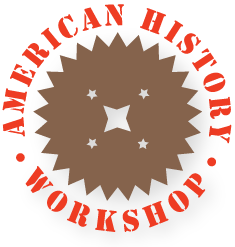Planning Tools
American History Workshop uses a unique set of tools in its planning and design work.
Professional Practice Through Collaboration
After many years of consulting, AHW recognized that individual cultural organizations cannot realize long-range goals by working only with their own resources. Further, public historical interpretation has no institutional basis for “R & D,” not within universities, professional associations, or public funding agencies. But much can be done collaboratively. To this end, AHW has initiated an annual New York Institute for Public History Interpretation, a 10-day training workshop for mid-career professionals. Many AHW projects include internships and training opportunities for entry-level professionals, especially those from minority backgrounds. Telling Lives, the newest AHW initiative, aims to foster consortia of museums, libraries, and archival projects to share research, public programming, and educational resources.
Community Story Workshops
Gathering groups representative of local and tourist audiences is a way of learning how key potential themes are currently understood, how diverse communities seek to learn, and what local cultural and organizational resources are available for partnerships. In the Berkshires, we discovered that visitors to an artist’s home and studio have little usable knowledge of how a practicing artist divides his time among solitary work in the studio, meetings with dealers and patrons, and carrying on a life outside of work. This moved the exhibit planning far beyond the examination of completed pieces to explore the creative process at work.
Experiential Flow Diagrams
Thinking of the site visit from the beginning as an event in time, not merely in space, is a way of disciplining the design process. For the Monmouth (N.J.) Battlefield Park visitor center exhibit, for example, AHW created multiple pathways that reflected widely diverging visitor expectations. Recreational visitors could get an overview of the 12-hour Revolutionary War battle in a 12-minute walkthrough. More committed visitors could explore tactics, weapons, and the social context of war making for hours on end without disturbing the “streakers.”
Thematic Overviews
Rooting the stories to be told in wider historical and cultural contexts, backed up by good scholarship, puts the project on a solid footing. Knowing the present is a precondition to interpreting the past. The introduction of an automated salmon-butchering machine to Pacific Northwest canneries in the 1900s and 1910s raised questions about ecology, immigrant labor, global markets, and technological change that are equally powerful for regional residents today.
Iterative Design
From the early moments of the project, key backers (staff, board members, community sponsors) should see the “whole picture.” Master planning is of course composed of many distinct research and design studies, but it is dangerous to isolate elements from their connection to other key domains. It is not just a building or an exhibit that is being constructed in the planning process but a community of supporters, who need to be knowledgeable enough to carry the project forth on their own for years to come. AHW projects proceed from one big picture to another, always fleshing in more details and always testing suggested changes by their impact on other interrelated elements.

